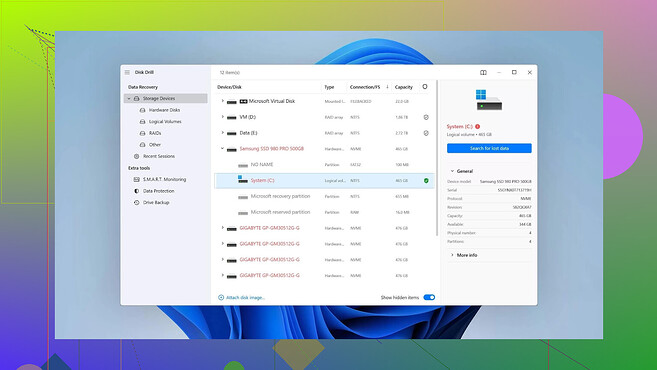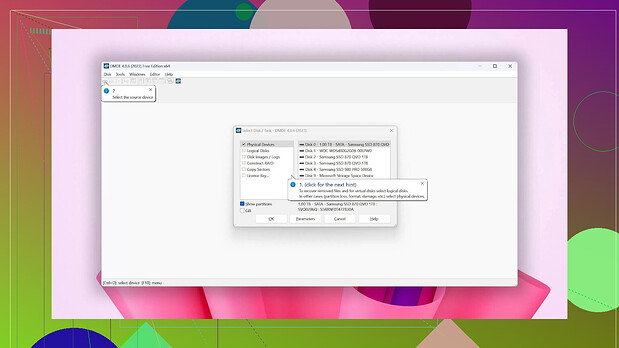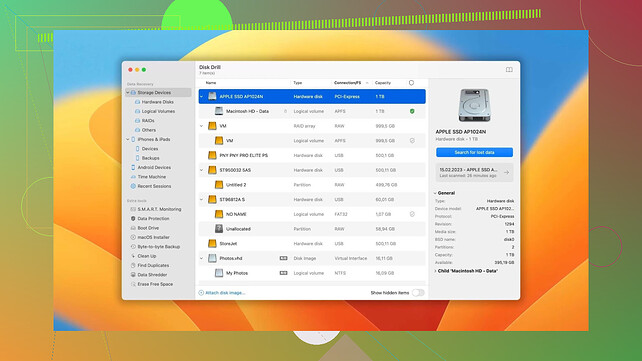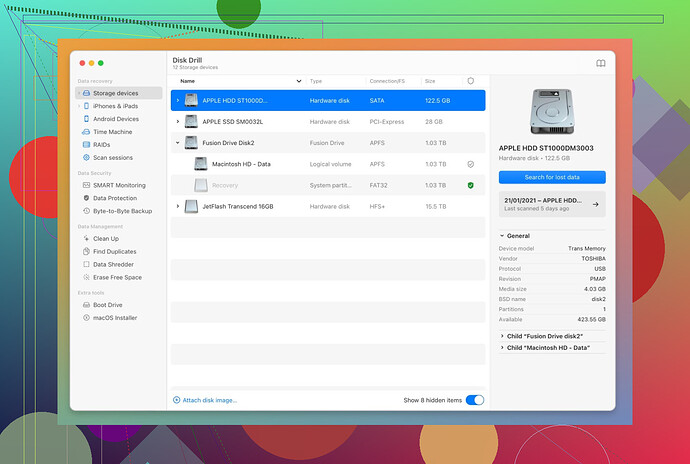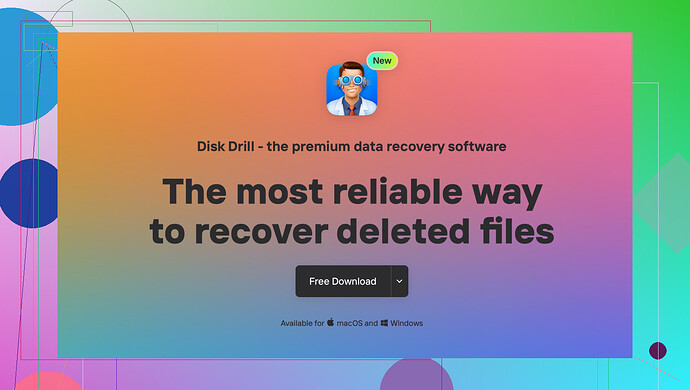I accidentally deleted important files from my computer and need to recover them. What’s the best data recovery software you recommend that’s reliable and easy to use? Looking for suggestions or experiences with good programs.
A Comprehensive Guide to the Best Data Recovery Software for Mac and Windows in 2025
In the digital era, losing important data can feel like losing a part of your world. Whether it’s accidentally deleted files, corrupted disks, or damaged storage drives, having the right recovery software can be the lifeline that saves your precious information. Below, we explore the top data recovery solutions for Windows and Mac users, highlighting both free and paid options tailored for hard drives, SD cards, flash drives, and more.
Top Data Recovery Software for Windows in 2025
1. Disk Drill – Our Champion!
When it comes to robustness and versatility, Disk Drill consistently ranks at the top. Resembling a Swiss Army knife for data recovery, this software supports various storage formats and provides numerous recovery tools aligned with both beginner and professional needs.
Key Advantages:
- Specializes in advanced RAID recovery (including RAID 0, 1, 5, and more).
- Pay for the license once and access the Mac version for free.
- Offers real-time scanning updates and allows virtual disk mounting.
- Preview files before restoring them.
Limitations:
- Doesn’t offer video or photo repair capabilities.
- Lacks the feature to create custom bootable disks.
Verdict:
Disk Drill stands out for its intuitive user interface and support for 300+ file formats across NTFS, FAT32, exFAT, ext4, and other file systems. It’s a reliable choice for novice and expert users alike.
2. DMDE – Unlocking Hidden Data
DMDE (DM Disk Editor and Data Recovery Software) blends powerful scanning capabilities with affordable pricing. Its focus on functionality over aesthetics appeals to tech-savvy users who can leverage its extensive recovery features.
Key Advantages:
- High-efficiency scanning combines with a bootable DOS version to retrieve data from legacy and malfunctioning systems.
- Enables fast recovery while offering support for custom file signatures.
Limitations:
- The previewing process for files can be slow.
- Doesn’t allow users to preview entire scan results at once.
Verdict:
With lifetime updates and commendable affordability, DMDE is perfect for power users who prioritize in-depth file recovery over polished design.
3. DiskGenius – Power at Your Fingertips
DiskGenius bridges the gap between recovery software and storage management tools. If you want more than just data restoration, this comprehensive software package offers efficiency for users comfortable navigating technical features.
Key Advantages:
- Combines versatile data recovery tools with disk management functionality.
- Comes equipped with WinPE boot creation and RAID recovery support.
Limitations:
- Its signature scanner struggles with certain tasks.
- Has a steeper learning curve, making it intimidating for beginners.
Verdict:
DiskGenius is ideal for IT professionals and advanced users seeking a blend of recovery tools and disk optimization features.
![]() Learn more about DiskGenius here
Learn more about DiskGenius here
Top Data Recovery Software for Mac in 2025
1. Disk Drill – One Solution for All
Disk Drill continues to impress in the Mac ecosystem, bringing features optimized for macOS users, including compatibility with the latest Apple processors and devices.
Key Advantages:
- Offers free bonus utilities alongside support for recovering RAW photos.
- Covers modern Mac systems, including T2 Security Chips and M-series processors (M1, M2).
- Includes recovery chance estimation for retrieved files.
Limitations:
- Doesn’t provide phone customer support.
- No built-in tools for remote data recovery.
Verdict:
An intuitive solution with advanced recovery options, Disk Drill successfully caters to both casual users and businesses relying heavily on Mac’s unique infrastructure.
2. R-Studio – The Technician’s Choice
For those who value power over simplicity, R-Studio steps in as a professional-grade recovery tool. Though its interface may feel overwhelming at first, its extensive range of features beckons to users who demand granular control over the recovery process.
Key Advantages:
- Includes a portable emergency version to recover data in critical situations.
- Supports older media, such as CDs, DVDs, and even floppy disks.
Limitations:
- Incompatible with T2 or M1 system drives, limiting its functionality with newer hardware.
- Lacks a built-in file preview option for assessing recovery outcomes.
Verdict:
Despite its complexity, R-Studio remains a powerful solution for professionals who work across disparate storage devices and situations.
3. Data Rescue – A Respected Veteran
Once a leader in Mac data recovery, Data Rescue has faced challenges keeping up with Apple’s evolving ecosystem. Nevertheless, it remains a viable option for basic recovery needs.
Key Advantages:
- Features virtual RAID assembly for reconstructing arrays.
- Includes a functional Hex editor for advanced data scrutiny.
Limitations:
- Requires an internet connection for license validation, which can be inconvenient.
- Doesn’t natively support M1 Macs.
Verdict:
While it has fallen behind in adapting to macOS advancements, Data Rescue still serves admirably for straightforward recovery tasks.
Final Reflections
Choosing the right data recovery tool involves balancing user-friendliness, advanced features, and system compatibility. For casual users, tools like Disk Drill offer ease of use with powerful features. Meanwhile, technical users may gravitate toward solutions like DMDE or R-Studio for deeper customization and control. Consider your specific needs and technical expertise when selecting software to safeguard and recover your valuable data.
If you accidentally deleted important files, don’t panic—there’s hope! From personal experience, Disk Drill is an absolute lifesaver. It’s reliable, user-friendly, and packs quite the punch regarding features. Whether you’re dealing with corrupted storage, SD cards, or just a classic case of accidental deletion, Disk Drill’s got your back. Plus, it lets you preview files before recovery, so you’re not restoring junk you didn’t need anyway. Super useful if you’re in a rush or just hate wasting time.
That said, DMDE deserves a mention, too. It’s more for the tech-savvy crowd, but if you like poking under the hood, its scanning capabilities are stellar. I will say, though, their interface feels like you’re using software from another century—functional but not pretty.
On Mac? Stick with Disk Drill—it supports M1 chips and even T2 Security Chips. (A tip for macOS users: recovery chance estimation is handy AF.) But if you’re someone who loves complexity to the point of frustration, R-Studio is another option. Just note, it’s not as smooth or compatible with newer hardware as Disk Drill.
In my opinion, stay clear of solutions that look too cheap or promise ‘magic fixes.’ Data recovery is no joke—pick something that’s actually proven to work, not what sounds too good to be true.
P.S. Mikeappsreviewer might’ve covered some heavy technicalities on other data recovery tools, but TBH, if you need quick, painless recovery without a headache, skip the over-complicated stuff. Just go for Disk Drill—it’s worth the license fee. You’re recovering precious files, not just playing around with software experiments! ![]()
If you’re looking for the best data recovery software, I’ll cut to the chase: Disk Drill. It’s seriously one of the easiest and most effective options out there. Like @mikeappsreviewer and @sonhadordobosque pointed out, it can handle everything from accidental deletions to corrupted drives. Plus, the ability to preview files before recovery is a game-changer—no more restoring random stuff you don’t need.
Now, while Disk Drill is super user-friendly, I’ll admit it doesn’t have ALL the bells and whistles some others offer. For example, if you’re someone who likes a hardcore, tech-heavy solution, DMDE might be up your alley. It’s great for custom file signatures and complex tasks, though the interface feels like it’s stuck back in 2005. But hey, functionality over fashion, right? If aesthetics don’t bother you, it’s worth considering.
That said, unless you’re deeply into IT-level precision, I’d argue Disk Drill is the better all-around option. Especially if you’re on a Mac—it works with Apple’s newer chips like M1 and includes free utilities like cleanup tools, which is a nice bonus.
One small gripe: if you’re expecting it to repair corrupted videos or photos, you’ll be disappointed. You’ll need additional tools for that. And if you’re on a super tight budget, there are free versions of other software like Recuva (meh, it’s okay) or TestDisk (not beginner-friendly at all but powerful if you know what you’re doing). Just don’t trust anything that claims full recovery magic for free—usually a scam.
In short, go with Disk Drill unless you’re feeling adventurous or super nerdy. It’s solid, efficient, and you won’t need a PhD in Data Recovery to figure it out.
